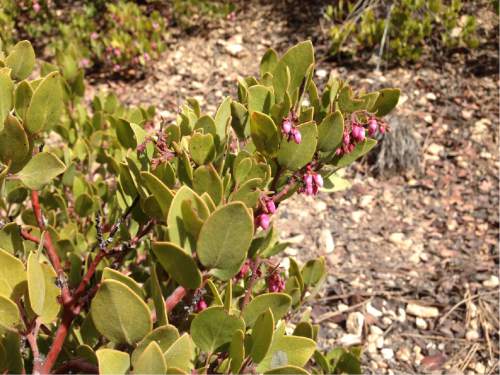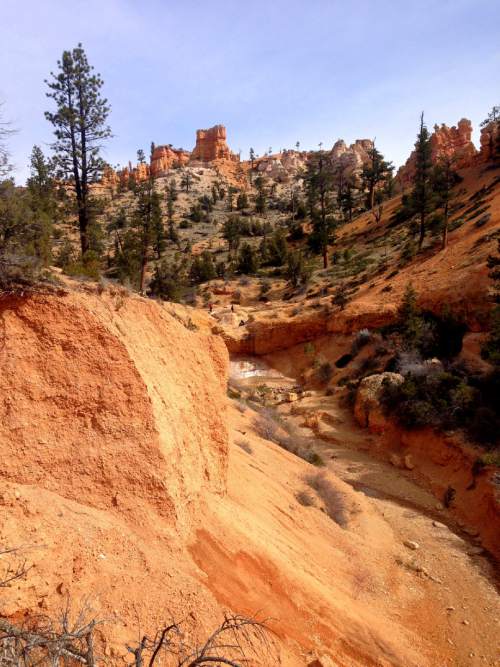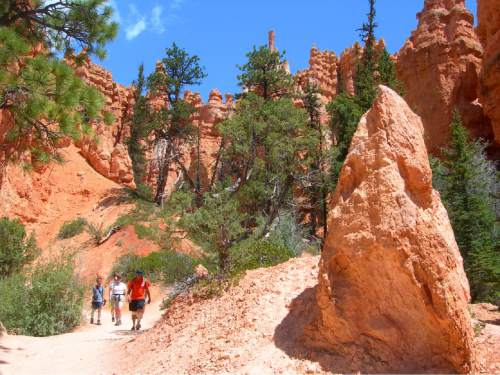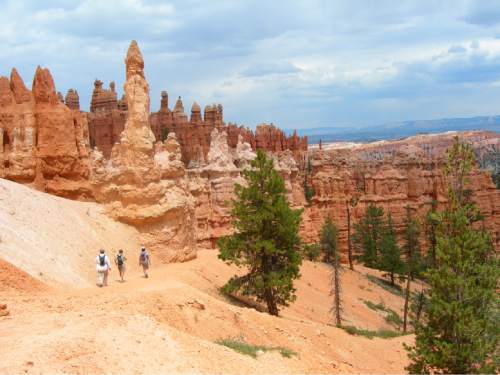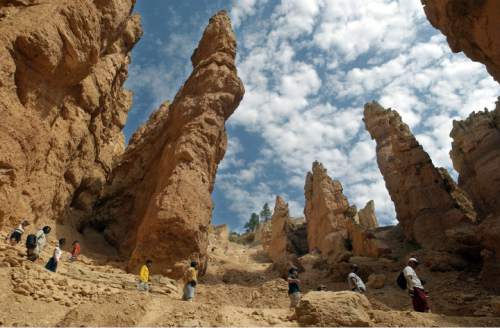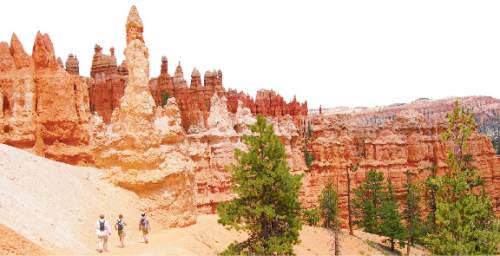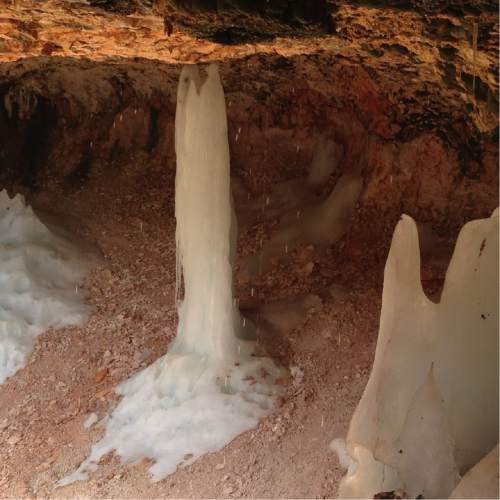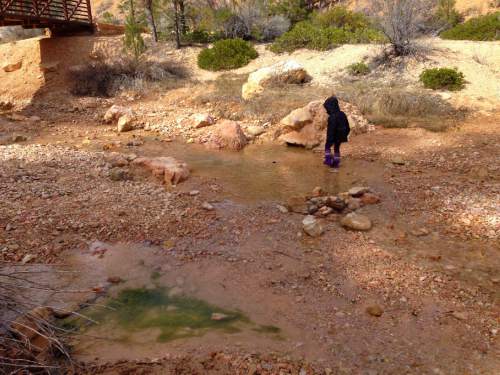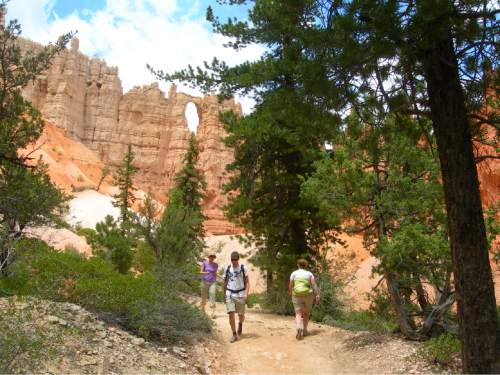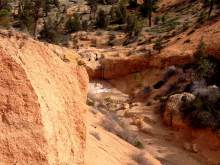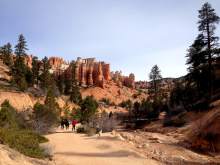This is an archived article that was published on sltrib.com in 2016, and information in the article may be outdated. It is provided only for personal research purposes and may not be reprinted.
Bryce Canyon is the single most impressive thing I have ever seen in a national park.
I remember my first trip, when I was in eighth grade. I was from Iowa, and I'd never heard of Bryce Canyon or seen pictures. When my brother and I got to Sunset Point, we started yelling and jumping.
It hasn't lost its impact over the years. Every time I go, I am astonished by the weirdness. When I took my daughter to meet relatives there in March, I thought, "$30 per car is nothing to see such an astounding place."
But every time I pass through a fee gate at a national park, I feel a pang of frustration in my stomach when I see the price on the senior lifetime pass: $10.
Yes, for people 62 and older, a one-time payment of $10 covers all entry fees at every National Park Service (NPS) site for the rest of their lives.
Accounting for life expectancy, that's $10 for more than 21 years of park access for an average 62-year-old. To compare, annual passes for my family over the same time period would cost more than $1,680. And that doesn't apply to other federal lands or discounts on camping and amenities like the senior pass does.
Before throngs of baby boomers gather with pitchforks outside the Salt Lake Tribune office, let me say: I don't fault anyone for taking advantage of this screaming deal. My own relatives used the senior pass to get into Bryce when we met there in March. My husband's cousin, Aaron, was touring the Southwestern parks with his dad, Mike. Aaron, who is a schoolteacher in New Mexico, said he could not afford the trip without piggybacking on Mike's senior pass.
That is a symptom of screwy policy priorities.
Aaron may not be perfectly emblematic of millennials' finances, but he shows the backward logic of the parks-fee schedule. The fact is, seniors make up the wealthiest age group in this country, and the wealth gap between young and old is widening more quickly than it ever has before. Yes, poor seniors exist, just like poor young people. But age is a bad way to match discount to need.
Meanwhile, the NPS costs are rising. The maintenance backlog is now valued at nearly $12 billion, in addition to yearly operating costs of about $3 billion annually.
To be fair, park fees represent a small part of the budget. In 2015, NPS collected roughly $230 million in fees, including $6 million from about 600,000 senior passes. But consider: All the seniors who bought a $10 pass in a previous year paid nothing and aren't included in that count. (Meanwhile, NPS sold 385,000 of the $80 annual passes — the only all-access passes available to the 79 percent of American adults who are under 62.)
The NPS does not collect much demographic data on park visitors. But other studies suggest that seniors make more use of some parks than young people do. CNN reported last year that the average age of visitors in Denali is 57, which would suggest seniors make up a huge part of Denali's traffic. Unless Alaska is their first national park destination after turning 62, they may already have their pass and will be exempt from paying admission. Yellowstone's average visitor age was 54, according to the same report.
Congress is considering a proposal to raise the cost of the senior lifetime pass to $80, a move the NPS estimates would produce $35 million in extra revenue (that figure appears to be modest, as it is not based on the most recent senior pass sales). That may not sound like much next to $3 billion, but it's real money to a park that has to close a visitors center or rope off a marquee attraction. And the smaller things make a big difference, especially in the busiest parks. Should the rest of us be content with fewer educational programs or broken toilets or longer shuttle lines or unfixable road damage while the wealthiest generation enjoys a subsidy?
It strains credibility that seniors who can afford to travel to the national parks can't afford the same entry fee required of young families. Someone who pays for flights, gasoline or a big RV to visit a world-class natural wonder like Bryce Canyon is not going to reach the gate and say: "Thirty bucks?! Forget it, I'm going back home."
Unlike other user fees, the senior pass is not controlled by the NPS; Congress has to change the law. It certainly should raise the price to $80, as proposed. But the fairest fee schedule would ignore age altogether and eliminate lifetime passes.
Surely we can look at the phenomenal hoodoos of Bryce Canyon and agree they're worth the cost of admission.
This is a pleasant, 1-mile stroll for all ages, with a well-maintained trail to a waterfall and a small cave. More details are available in our Hike of the Week, and you can see the trail route on Google Maps.
Previous national park trip reports
12 Months of National Parks — No. 1, Acadia: Small children love nature, but on their own level
12 Months of National Parks — No. 2, Capitol Reef: 'People shouldn't be here'
12 Months of National Parks — No. 3, Arches: Are national park rules too strict?
12 Months of National Parks — No. 4, Canyonlands: The best fun may require a child's eyes
12 Months of National Parks — No. 5, Biscayne: A threatened park claws its way forward
12 Months of National Parks — No. 6, Everglades: Please don't spank the gator
ealberty@sltrib.com
Twitter: @erinalberty


